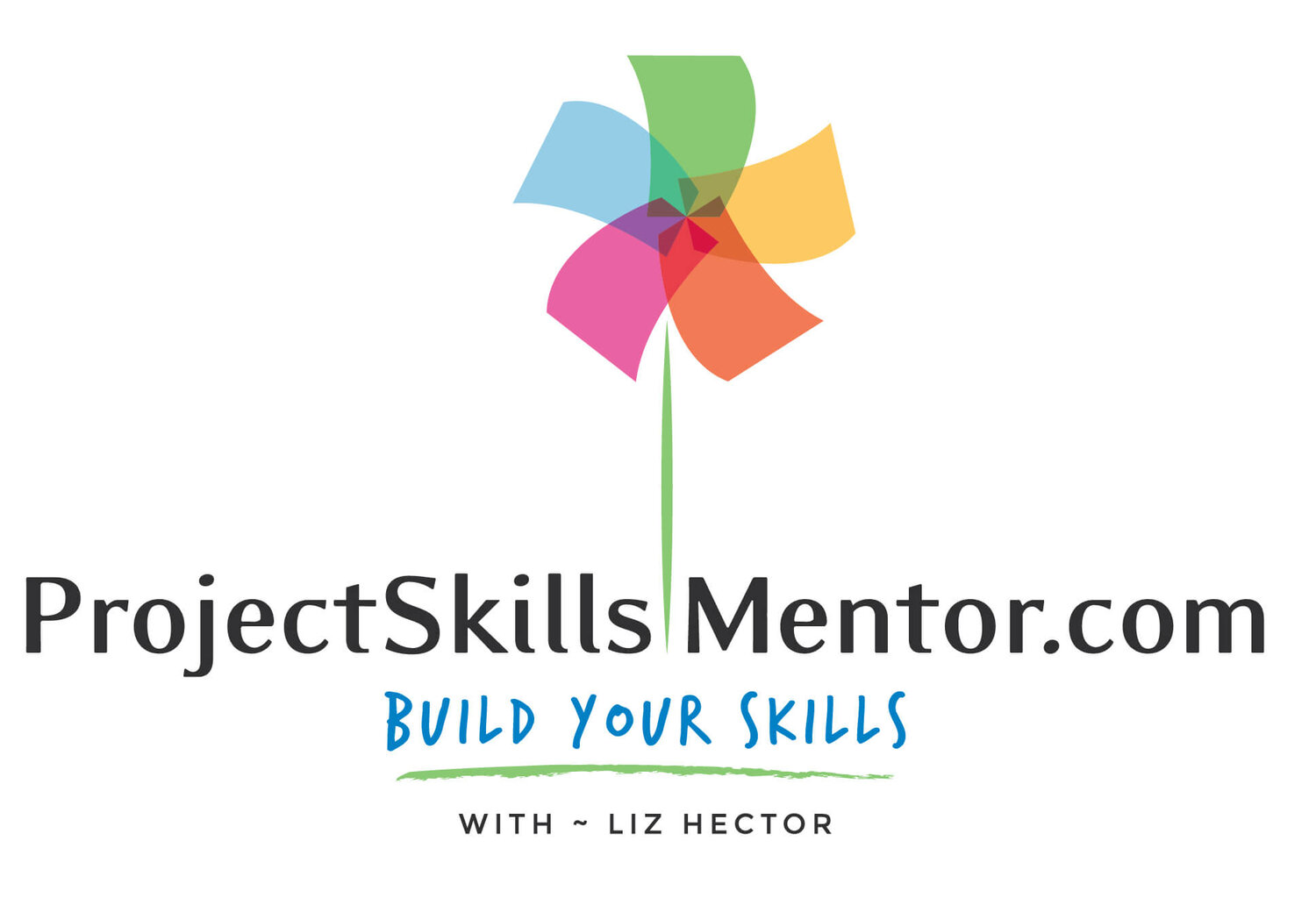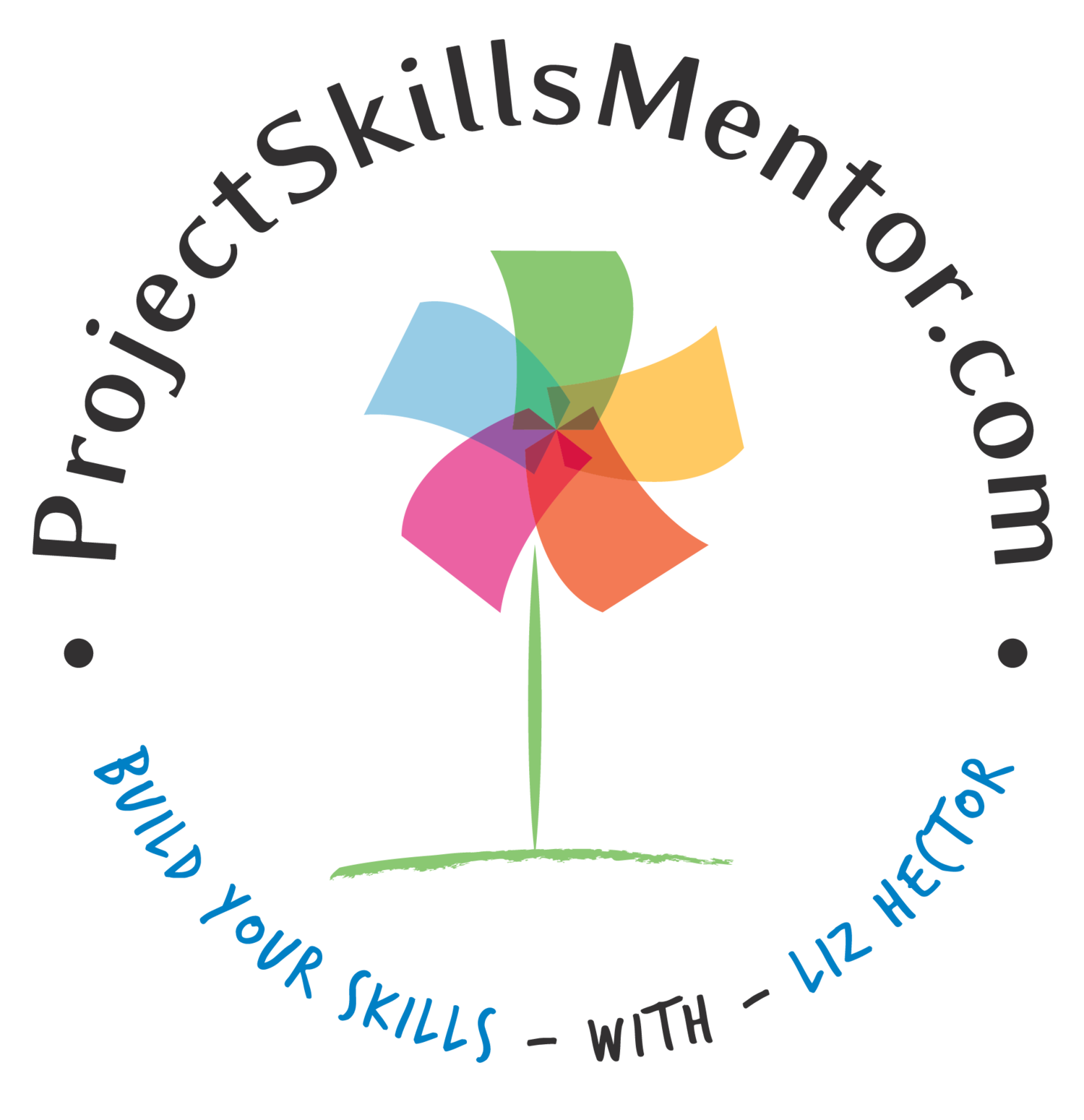What are the 5 key steps to starting a Project?
The 5 key steps to starting a project:
To Set project Goals, define project success
Set the Goal
Define Success
Build a Plan
Create Control
Communication
A Project is used to achieve a goal
A series of tasks organized to optimize work toward an outcome.
How to start a Simple Project
Name the project based on the goal
Name key actions and their related tasks
Give start and end timeframes for each task
Note the hours estimated to complete each task
Indicate who will do the task (if needed)
An alternative approach: Agile/Scrum
The same task information would be needed, however, the action to complete would be done as hours or people are available. More on these options in the next post.
User Story Board
The story takes the Users point of view. This is detailed in the User Journey blog
Design Thinking
Design thinking is meant to capture the needs and wants of the User.
Project Charter and Critical Success Factors
Defining the project in a nutshell the Charter is a document agreed to with the Stakeholders that allows the Project Manager to plan with confidence.
Draft a High Level Timeline & Staff Plan
Start with a draft of key dates and staff — this is the basis for the detailed plan.
What is the right approach for the Project
Review the options based on the type of project and requirements of the product or stakeholders.
The Power of a Project Book
A tool for success when making decision, answering questions, and attending meetings.
The Project Manager sets the tone for the project
Project Managers have may roles to play. Communication is one of the most important of these. They oversee, direct, encourage, inspire, manage, inform and more.
The team will respond to a Project Manager who shows they understand the project and have a clear view of the status. Project Managers can do this with the help of the Project Book.
What is a project?
Let's start with the basics: What is a project exactly?
A project is a step by step method to organize, do, and control the process of an activity. Project duration (total time from start to end), complexity, requirements, and the number of people involved need to be considered when starting a project.
Why use project planning at all? I have found that project methods make me more productive, focused, and flexible in my work and life.
When I create a project, the steps and timing are clear, and when something changes, I can see how this will impact my overall plan.
The power of project management and project planning is one of the keys to my business and life success. With targets to work to, success and momentum are easier to maintain.
This post will review what is needed to manage projects big and small. In its simplest form, a project is a way of getting things done to apply to almost any specific, time-based activity that can be broken into sub-tasks.
If your goal is a simple project, check the box on the left: "How to start a simple project." For a straightforward project with few team members and steps, you only need to define the basics, create a plan, and do the work.
If your project is more complex, keep reading to find out how to get through the 5 steps to start a successful project.
Projects can be managed in several different ways depending on the type of project and personal preference. But the 5 Steps to Starting a Project are the same for virtually all of the projects.
How to Set Goals — for your Product and Project?
How you define a Project's product or outcome will help to shape the project. Initially, it seems best to start with planning. However, it is actually best to start with the goal and purpose of the project. By defining and documenting the project's outcome (or result), you can better appreciate the steps needed to realize your goal.
In my work as a Project Manager, the step to clarify the goal is often skipped. I have seen projects fail because the goal was not clear or not well communicated to, or shared by, others. The product and/or outcome documentation also includes what is in scope and not in scope. Documenting 'Out of Scope" seems open-ended (could be an endless list), but it is not. The best rule of thumb is: to the extent it could have been in scope, but is not, name it. It may also be helpful to note the reason the element was out of scope for later reference.
To better understand the scope and details of the product or outcome a variety of methods can be used. I summarize 5 of these here.
Requirements gathering focuses on a list of “must-haves” and nice to have attributes required to consider the product viable.
User Journey (also called User Experience) this process takes a deeper approach. By looking first at the user's expectations, the product or outcome can be judged by its level of potential adoption by users.
Design Thinking is a kind of User Journey work which focuses on the
Brainstorming is used when the requirements may not be fully known. Brainstorming can be as simple as 'free-forming ideas and then grouping them for types. Building off of these ideas to form new ideas will be detailed in the User Experience blog section.
MVP or "minimal viable product" means releasing a version of the product that is enough for user adoption. User feedback and real-life 'testing' yield the next group of product scope.Taken together with requirements, this can be seen as interactive scope management and is best when the outcomes can be fluid.
Whatever the approach or combination of approaches used, the important point is to:
Know what the purpose is for the project
Know the scope and approach to be used to create the product
Investigate your users or needs to ensure your product is viable
Document the product by -
Create visual User Experience, if desired
Create a list of requirements
Document the Project via the next step - Start BIG
Note: The elements discussed in this section will be discussed more in later posts. For User Journey information, see the blog under that heading.
How to define Success?
Starting with the Project Charter and CSF’s
The “big picture” refers to understanding and creating a document to capture the project's main points before diving into details. The Project Charter is one of the first documents created for a project. It gives a place to summarize the Goal Setting work, including:
The Goal in detail: what should be included: The Why, what, how, and who. Let's go over what a Project Charter should include:
What is the project goal? What do you want to do or accomplish? How will success be defined?
What is your scope? What are you including and not including in the work? Not in scope can be tricky, but documenting what is not being done can help avoid scope creep (to be discussed more later).
What is your timeframe? Be specific, hours, days, weeks. Work forward or backward from a date when the project is due, or the event is scheduled to take place.
What do you need to meet the project scope? People, tools, materials? List all of the staff, availability (how much time they will work on the project), skills, and roles. List all of the assets, tools, and site requirements (offices) the project needs. List assumptions as these can help later.
Who are your stakeholders? Do you need approval from someone? Will there be approval milestones during the process? If so, summarize the stakeholders, roles, meetings planned, and what milestones require sign-off.
What are the risks involved in the planning and execution of the work? How can they be mitigated? What are the variables with potential unknown issues? Summarize here, but document fully in the Risk Register to be discussed in a later post.
How will you measure the success of your project? It is important to be specific. Understand your key objectives and how you will measure each of these areas: product, timing, and budget. Be concise about how you will measure, how often, and what the standard is. Measurements take time to collect and assess. For this reason, 3 to 5 key indicators, or Critical Success Factors, are generally considered optimum for most project oversight.
Before you start on the detailed project plan. Your Charter can help you create some interim documents:
How to Build a Plan?
Building the Plan is generally the first major milestone of the project. It take time and consideration to get it right. For that reason, the next blog “How to Build your Project Plan” will give more detail in this area. Below is a summary of the main points to build a project plan.
Start with key information
Following the Project Charter, you need to create some high level documents and make some decisions based on your project.
A Timeline. It helps to set out a high level timeline to check before processing the detailed information in the plan.
A Staff Plan. The Roles, Staff and their availability will be important to know how many team members you can plan to work on the tasks.
Define the Plan Approach
Will the project use Workflow, Agile, a hybrid of the two, or possibly an alternative approach? This needs to be decided before ordering and installing the tool, training the team (if needed) and building the Project Book).
The Approach needs to be fit for purpose and aligned with the requirements of the project, product and company. If the product or company requires rigorous documentation, then the Workflow approach is generally used. If speed and user adoption is important, than the Agile is often a good approach.
Either way, all approaches have pro’s and con’s. The decision once made is hard to undo, so time spent considering this is useful later.
Building the Plan
The Plan is a living document. The more information tracked in one tool the easier, however, it the process of updating the document and resolving conflicts with timing and staff take time.
For maximum quality of the plan it should be reviewed by key stakeholders, team leads, and any subject matter experts which may need to validate tasks or timing.
The plan will need to have version control for needed variance reporting.
The Plan represents the main working document for the Project Manager and team, but it is not the only document. Next, the project manager will need to create the Project Book.
Create Control and Monitoring
As a Project Manager, I remember carrying my Project Book around the office with me. It was my go-to source for every detail I might be asked about as I went about my day and through the many meetings I attended or chaired. I consider it one of the secrets of my success.
Project Manager’s Toolkit is a summary of Project Managers templates ready for you to use. A PDF examples documents shows how the documents fit together to create the end-to-end view of the project.
Version control should be kept for each of the Project Book changes. This way there is a clear trail between the initial, approved plan — the “baseline”, and future changes to the planning. Most Projects will change. Keeping track of these and updating the Project Book will keep things clear for the Project Manager and others. It may be that versions of the Project Book need to be re-approved. If this is the case, the re-approved status should be noted in the documentation. Project oversight; this includes:
Project Charter — covered above, this sets out the main points of the project.
Key Action Planner — defines the key dates and actions.
Key Staffing Log — defines staffing, roles, and availability.
Project Plan — This is the task and timeline, which often includes staff allocation and estimated hours.
Project Calendar — tracking everything from training days, holidays, staff away periods, work blackout periods, and other key dates.
Change Control Log — this tracks any changes in the project after the project baseline approval.
Risk Register * — documents potential problems and resolutions
Quality Log * — the specification for assessing the project quality, the method, and measures used. Logs the findings for reporting gaps in quality for management resolution.
Budget # — This document should include the full budget and any variances against the project budget since approval.
Communication plan — documents the message, timing, and audience for project updates in and outside the project team.
Project DashBoard/Status Report — A snapshot of the project's health and issues for review and escalation. It is helpful if the book is based on a date linked to a Dash Board to clarify status details.
* this is discussed in the blog "How to successfully monitor a project" successfully
# this is discussed in the blog "How to create a project Budget"
Since version control is key, I will give an example: if the initial project book is stamped as Initial_Project Book_May_20, then all of the documents should include the same set of scope, staff, assumptions, costs, etc. This initial version would be approved and used as the base line against changes to explain variance from baseline when updates are made and new planning, staffing and costs are registered in the current Project Book.
In the example of version control, when the data set is reviewed and updated for June, all of the documents would be included, even if not updated, to ensure a consistent 'snapshot' for all data included. This would then be, (for instance) Updated_Project Book_June_20.
Managing project document version control is a major part of controlling and overseeing changes that create variances from the original plan.
Would you like to know more about the Project Workbook? Go to The Project Manager’s Toolkit to read more and download the free template for your own use. I also provide a user reference version with completed example documents.
Communication
Communication, Communication & Communication
The second 'primary role' of the Project Manager is communication. Staying with the conductor's analogy for a moment, that wand the conductor uses is not 'just' for show. It is to communicate cues to the members of the orchestra.
The responsibility to communicate in a clear and compiling way is an important skill for any project manager since they must keep lines of communication open to:
Stakeholders to ensure alignment with the work, timeline, and outcomes of the project.
Project leads to delegate the detailed tasks of the team.
Project Team members to act as a leader for the vision of the project.
Project managers in related projects since more than one thing is often going on. Other project managers may be providing or expecting output from your project.
Suppliers and Vendors while needed supplies may be managed by purchasing or other departments, but the delivery of services of items needed for the product is often part of the project manager's oversight.
Product End Users of the end product may be internal users, if so, direct access to a group of users is critical to ensure the product meets their needs and expectations. They often work with the team during requirements gathering and testing. They need to be informed and kept on board to keep their focus for the project's duration.
Legal, Marketing, Accounting, HR, and other internal departments are needed to need to run corporate project. Ensuring they are informed of the project goals, timelines and when their department is needed will be key to timely response and help on the project.
Communication is one of the most underrated parts of a Project Manager's role. But one which takes the most effort and time, in my experience. More on this in future blogs.
Get your project successfully started with my free Project Managers Toolkit, check out the blog and download the bundle excel templates and the reference guide today.
I hope you found these 5 Steps to Project Success useful.
What are you 5 top tips? Do you have a secret to your success you’d like to share?
I am looking forward to seeing your answers in the comment below.













